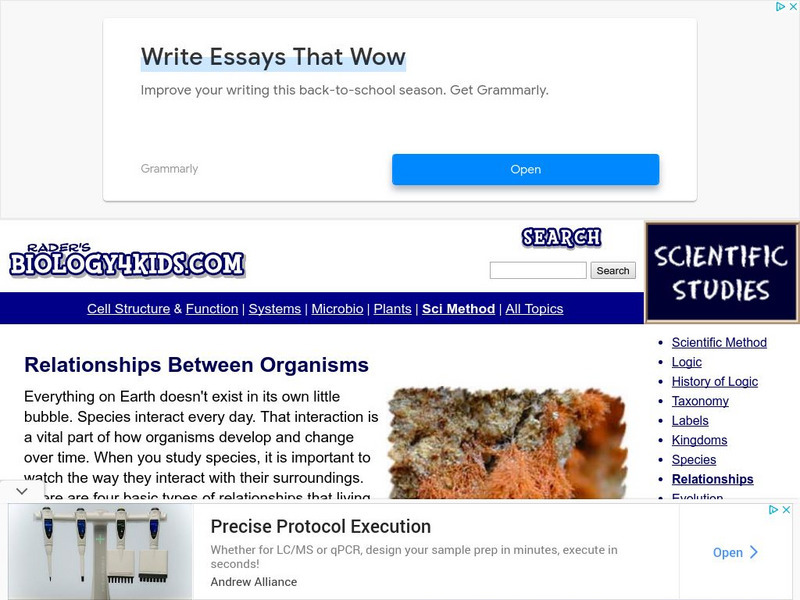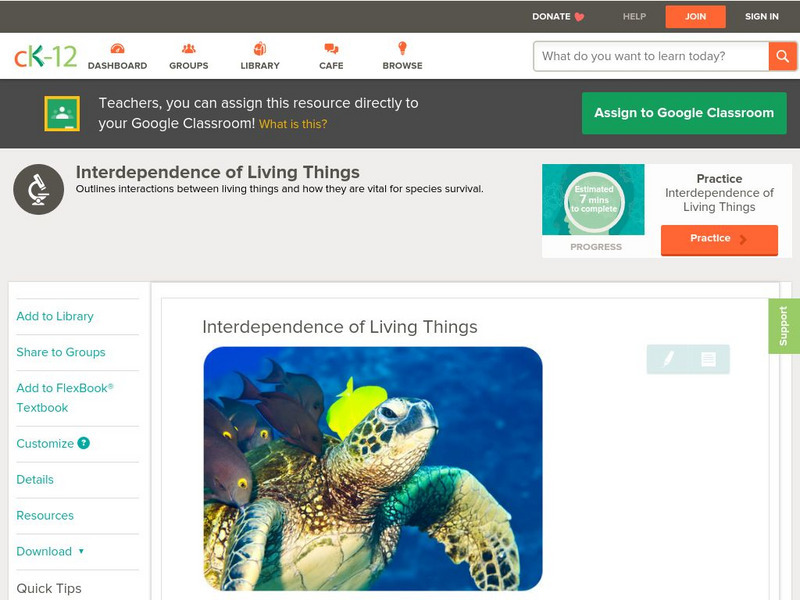PBS
Pbs Teachers: Volcanoes of the Deep
Discuss how individual organisms and groups of organisms interact with each other, and research and classify symbiotic relationships between individual organisms of different species.
Tom Richey
Slide Share: Ecosystems and You
Slideshow that looks at energy flow in an ecosystem. Explains what an ecosystem is, how energy flows through it, the producers and consumers of energy, and food chains. Links to a video about plastic debris in the ocean.
Sophia Learning
Sophia: Living Organisms and Their Environment: Lesson 2
This lesson will discuss the interactions of and interdependence among living things. It is 2 of 4 in the series titled "Living Organisms and Their Environment."
Sophia Learning
Sophia: Living Organisms and Their Environment: Lesson 3
This lesson will discuss the interactions of and interdependence among living things. It is 3 of 4 in the series titled "Living Organisms and Their Environment."
Shmoop University
Shmoop: Ecosystem Energy Flow
Explains the processes by which energy flows through an ecosystem. Covers the meanings of key vocabulary, e.g., types of producers and consumers, trophic levels, food webs, and the energy pyramid.
Biology 4 kids
Biology4 Kids: Relationships Between Organisms
Species interact every day. That interaction is a vital part of how organisms develop and change over time. When you study species, it is important to watch the way they interact with their surroundings. There are four basic types of...
Sophia Learning
Sophia: Carrying Capacity: Lesson 2
This lesson will introduce the carrying capacity and show how it affects a population. It is 2 of 4 in the series titled "Carrying Capacity."
Sophia Learning
Sophia: Carrying Capacity: Lesson 3
This lesson will introduce the carrying capacity and show how it affects a population. It is 3 of 4 in the series titled "Carrying Capacity."
CK-12 Foundation
Ck 12: Biology: Interdependence of Living Things
[Free Registration/Login may be required to access all resource tools.] Covers how species interact with each other.
Science Struck
Science Struck: Symbiotic Relationships in the Tundra
Explains what mutualism, commensalism, and parasitism look like in a tundra biome.
Science Struck
Science Struck: Symbiotic Relationships in the Desert
Describes three types of symbiotic relationships that can be found in a desert biome.
SMART Technologies
Smart: Ecosystem Food Chain and Food Web
Starts with living and non living and works through producers, consumers, food chains and food webs.
Other
S Cool: Engery Flow and Nutrient Cycle
This website describes trophic levels, transfer of energy between trophic levels, pyramids of ecology, and nutrient cycles within the environment.












